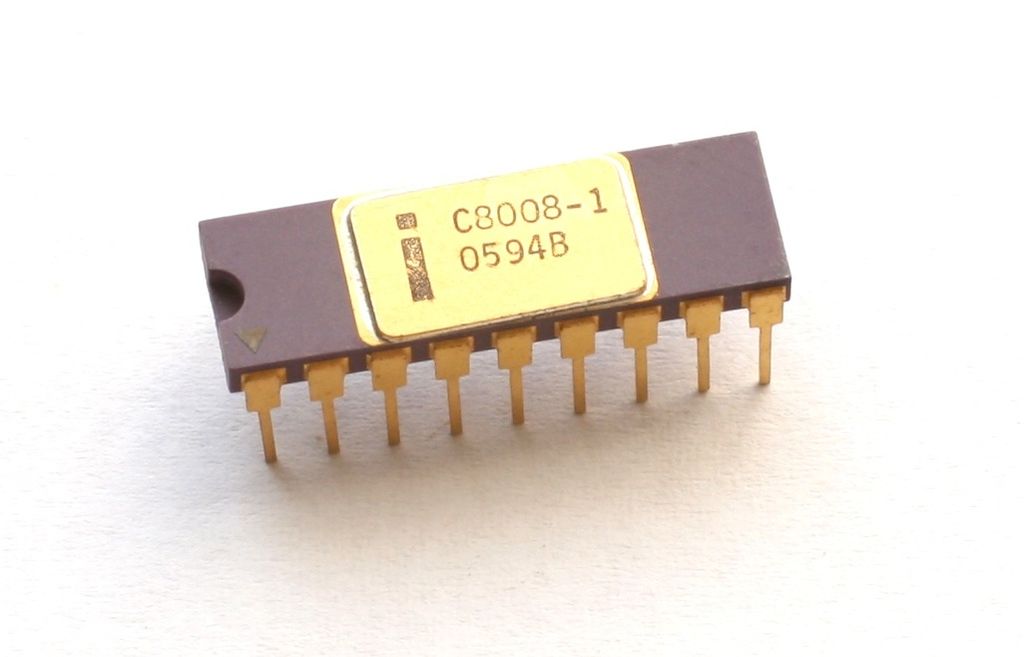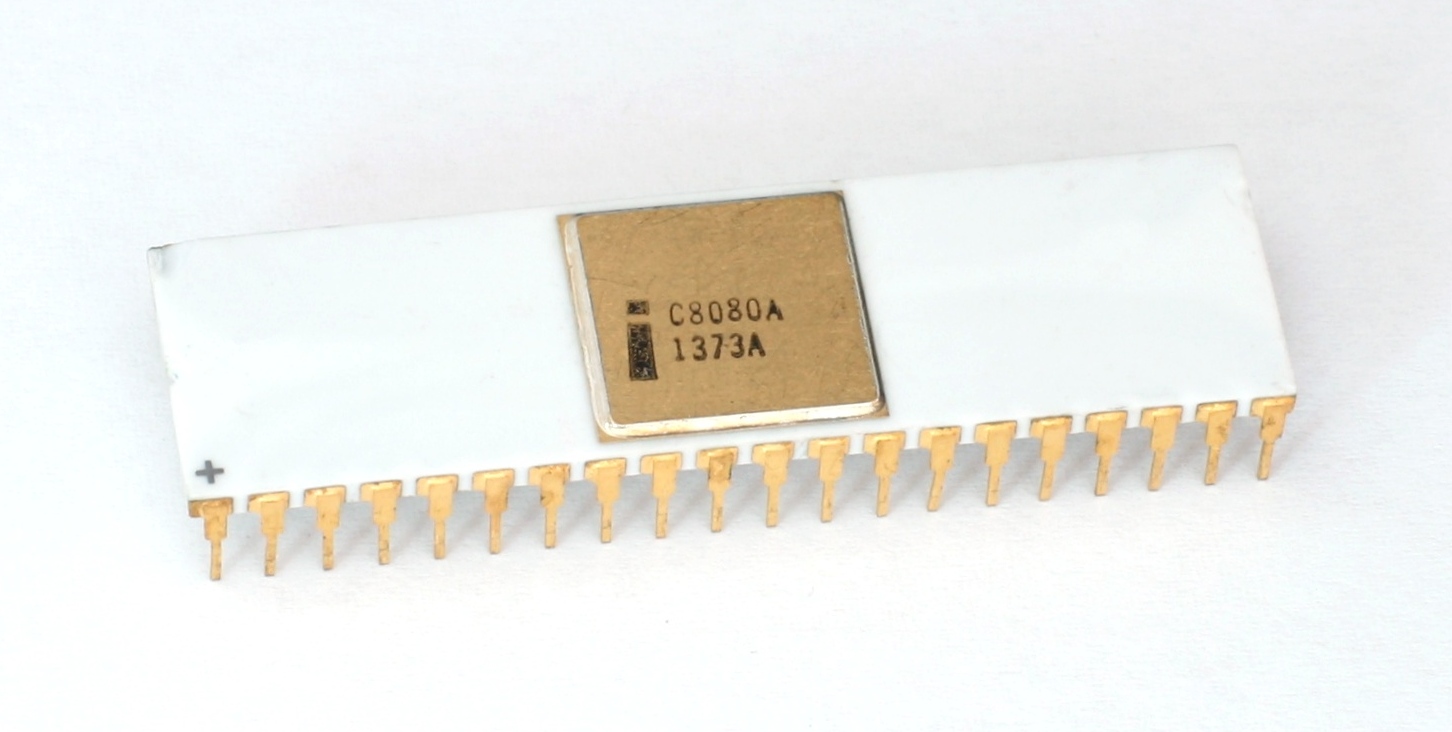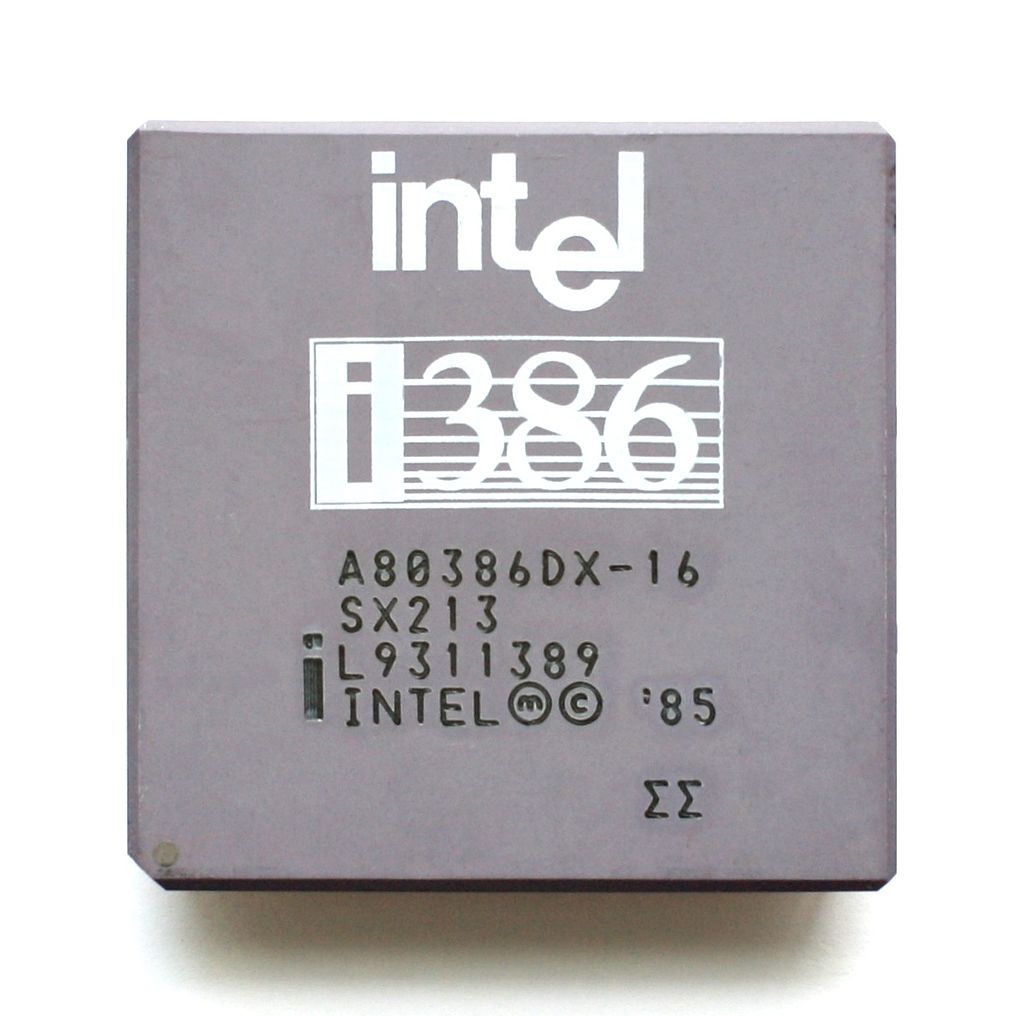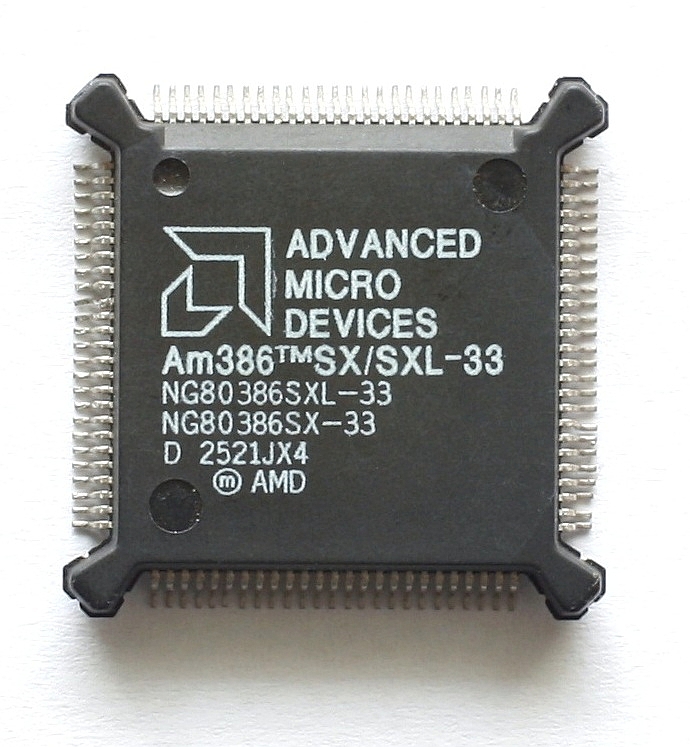The Fight of Two Yokozun

Less than a day is left before the start of sales of the new AMD EPYC ™ Rome processors. In this article, we decided to recall how the story of the rivalry of the two largest CPU manufacturers began.
The first 8-bit commercially available processor in the world was Intel® i8008, released in 1972. The processor had a clock frequency of 200 kHz, was carried out according to a 10 micron (10000 nm) technological process and was intended for "advanced" calculators, input-output terminals and automatic bottling machines.

In 1974, this processor became the basis for the Mark-8 microcomputer, presented as a DIY project on the cover of Radio-Electronics magazine. The author of the project, Jonathan Titus, offered everyone a booklet worth $ 5, containing drawings of the conductors of printed circuit boards and a description of the assembly process. Soon, a similar project of the Altair 8800 personal microcomputer, created by MITS (Micro Instrumentation and Telemetry Systems), was born.
Start of rivalry
2 years after the creation of the i8008, Intel released its new chip, the i8080, based on the advanced architecture of the i8008 and performed on a 6 micron (6000 nm) process. This processor was about 10 times faster than its predecessor (clock frequency 2 MHz) and received a more developed system of instructions.

The reverse engineering of the Intel® i8080 processor, performed by three talented engineers - Sean and Kim Haley, as well as Jay Kumar, led to the creation of a modified clone, called AMD AM9080.

At first, the AMD Am9080 was released without a license, but later a licensing agreement was signed with Intel. Thus, both companies gained an advantage in the chip markets, as buyers tried to avoid possible dependence on a single supplier. The first sales were extremely profitable, since the cost of production was 50 cents, and the chips themselves were actively bought by the military at $ 700 apiece.
After that, Kim Haley decided to try his hand at reverse engineering the Intel® EPROM 1702 memory chip. At that time, it was the most advanced permanent memory technology. The idea was only partially successful - the created clone only stored data for 3 weeks at room temperature.
Having broken a lot of chips and based on his knowledge of chemistry, Kim concluded that without knowledge of the exact temperature of oxide growth, it would be impossible to achieve the declared Intel performance (10 years at 85 degrees). Demonstrating a talent for social engineering, he called Intel and asked at what temperature their furnaces were operating. Surprisingly, he was not hesitated to be informed of the exact figure - 830 degrees. Bingo! Of course, such tricks could not but entail negative consequences.
First trial
In early 1981, Intel was preparing to conclude a contract for the production of processors with IBM, the largest computer manufacturer in the world at that time. Intel itself did not yet have sufficient production capacity to close the needs of IBM, so in order not to lose the contract, I had to compromise. This compromise was a licensing agreement between Intel and AMD, which allowed the latter to begin production of Intel® 8086, 80186, and 80286 clones.
After 4 years, the latest Intel® 80386 processor with a clock frequency of 33 MHz and 1 micron (1000 nm) process was introduced on the x86 processor market. AMD at the time also prepared a similar chip called Am386 ™, however, the release was postponed indefinitely due to Intel's categorical refusal to provide technology data under a license agreement. This was the reason for going to court.
As part of the lawsuit, Intel tried to prove that the terms of the agreement apply only to processors of previous generations released before 80386. AMD, in turn, insisted that the terms of the agreement allow it not only to reproduce 80386, but also future models based on x86 architecture.

Litigation lasted several years and ended in victory for AMD (Intel paid AMD 1 billion). The trust relationship between the companies came to an end, and Am386 ™ was released only in 1991. Nevertheless, the processor was very popular because it worked at a higher frequency than the original (40 MHz versus 33 MHz).

Competition development
The first processor in the world, based on a hybrid CISC-RISC core and having a mathematical coprocessor (FPU) directly on the same chip, was Intel® 80486. FPU allowed to significantly accelerate floating point operations, relieving the load from the CPU. Another innovation was the introduction of a conveyor mechanism for executing instructions, which also increased productivity. The size of one element was from 600 to 1000 nm, and from 0.9 to 1.6 million transistors were already placed on the crystal.
AMD, in turn, introduced a full functional analogue called Am486 using the Intel® 80386 microcode and the Intel® 80287 coprocessor. This circumstance has led to numerous lawsuits. A 1992 judgment confirmed that AMD had infringed copyrights on the FPU 80287 microcode, after which the company began developing its own microcode.
Further lawsuits either confirmed or disproved AMD’s rights to use Intel® microcodes. The final point in these matters was set by the California Supreme Court, recognizing that AMD’s right to use microcode 80386 was illegal. The result was the signing of an agreement between the two companies, which nevertheless allowed AMD to manufacture and sell processors containing microcode 80287, 80386 and 80486.
Other players on the x86 market, such as Cyrix, Texas Instruments, and UMC, also sought to replicate Intel's success by releasing functional counterparts to the 80486 chip. One way or another, they failed. UMC dropped out of the race following an injunction banning the sale of its Green CPU in the United States. Cyrix failed to conclude profitable contracts with large collectors, and litigation was also ongoing with Intel regarding the operation of proprietary technologies. Thus, only Intel and AMD remained leaders in the x86 market.
Build up the pace
Striving to win the championship, both Intel and AMD tried to achieve maximum performance and speed. So AMD was the first in the world to break the 1 GHz threshold by launching its Athlon ™ (37 million transistors, 130 nm) on the Thunderbird core. At this stage of the race, Intel had problems with the instability of the second-level cache in its Pentium® III on the Coppermine core, which caused a delay in the release of the product.
An interesting fact is that the name Athlon came from the ancient Greek language and can be translated as “competition” or “place of battle, arena”.The same successful stages for AMD were the release of the Athlon ™ X2 dual-core processor (90 nm), and after 2 years the Quad-Core Opteron ™ (65 nm), where all 4 cores are grown on a single crystal, and do not represent an assembly of 2 crystals each 2 cores in each. At the same time, Intel is releasing its famous Core ™ 2 Duo and Core ™ 2 Quad, performed on the 65 nm process.
Along with an increase in clock frequencies and an increase in the number of cores, the question arose of mastering new technological processes, as well as entering other markets. AMD’s largest deal was the purchase of ATI Technologies for $ 5.4 billion. Thus, AMD entered the market for graphics accelerators and became the main competitor to Nvidia. Intel, in turn, acquired one of the divisions of Texas Instruments, as well as Altera for $ 16.7 billion. The result was the entry into the market of programmable logic integrated circuits and SoC for consumer electronics.
A notable fact is that since 2009, AMD abandoned its own production, focusing solely on development. Modern AMD processors are available at GlobalFoundries and TSMC. Intel, by contrast, continues to develop its own semiconductor element manufacturing facilities.
Since 2018, in addition to direct competition, both companies have appeared and joint projects. A vivid example was the release of the 8th generation Intel® Core ™ processors with integrated AMD Radeon ™ RX Vega M graphics, thus combining the strengths of both companies. This solution will reduce the size of laptops and mini-computers, while increasing productivity and battery life.
Conclusion
Throughout the history of both companies, there have been many episodes of controversy and mutual complaints. The struggle for leadership has been ongoing and continues to the present. This year we saw a major update to the Intel® Xeon® Scalable Processors line, which we already talked about on our blog , and now it’s time for AMD to enter the scene.
Very soon, the new AMD EPYC ™ Rome processors will appear in our laboratory. Be the first to know about their entry.
All Articles